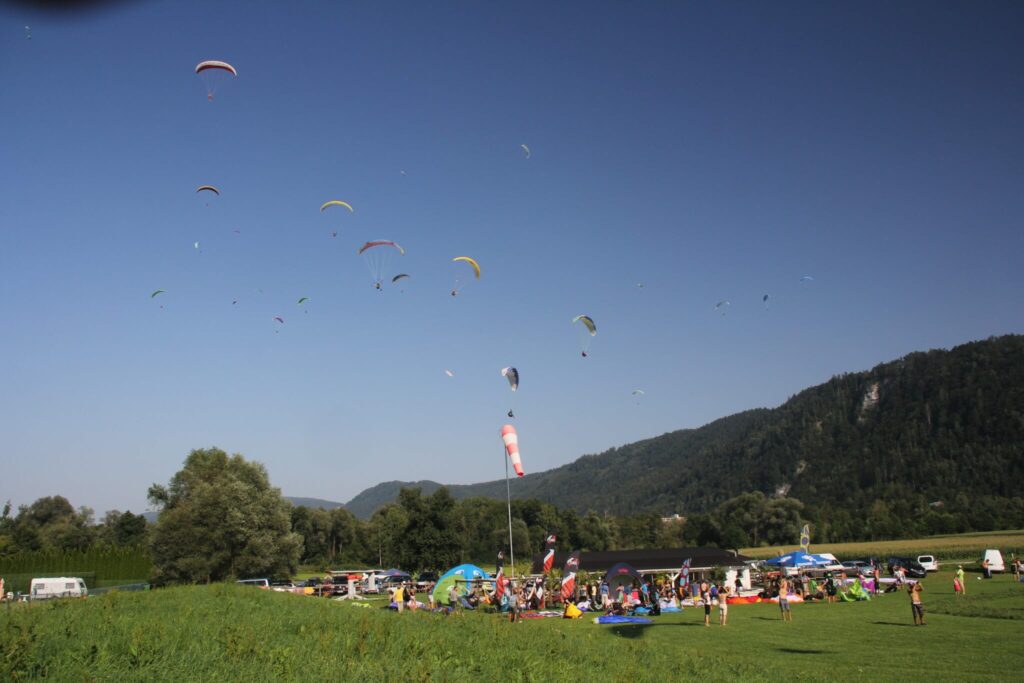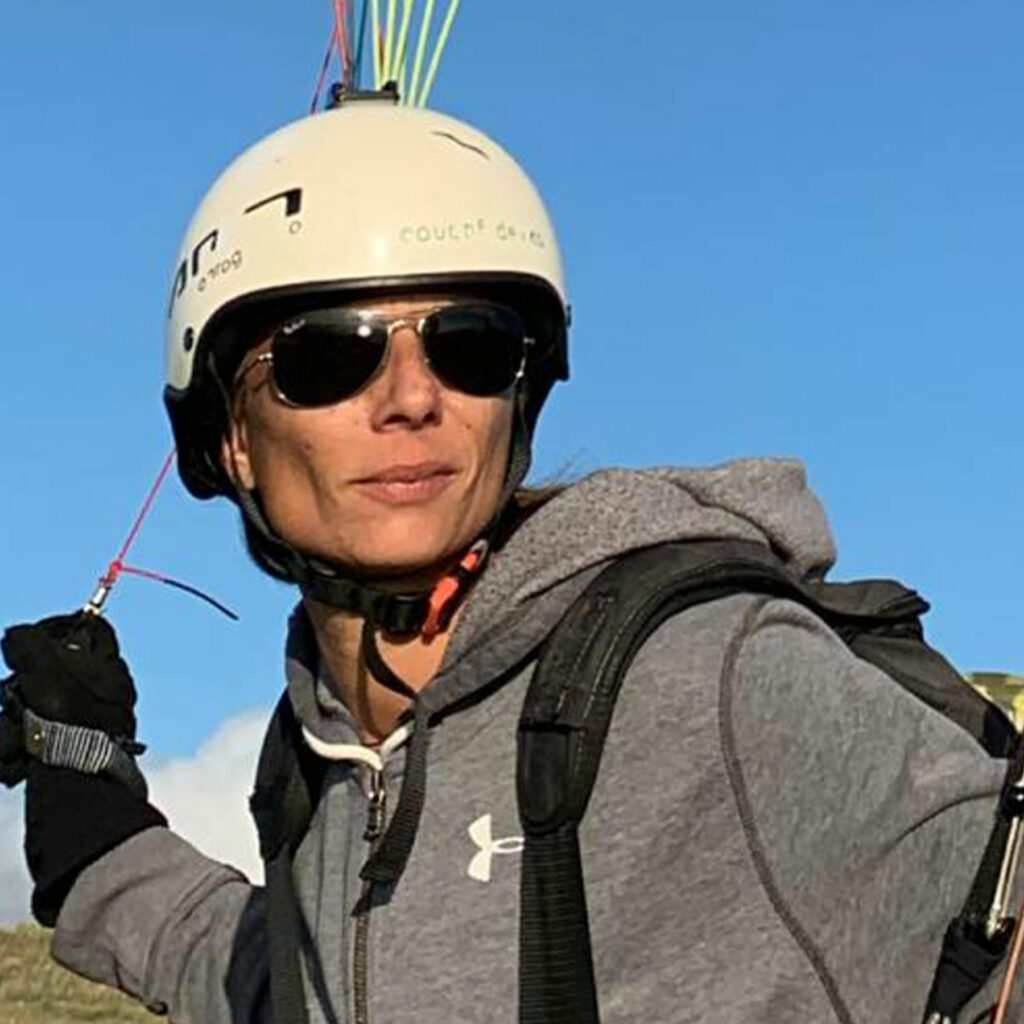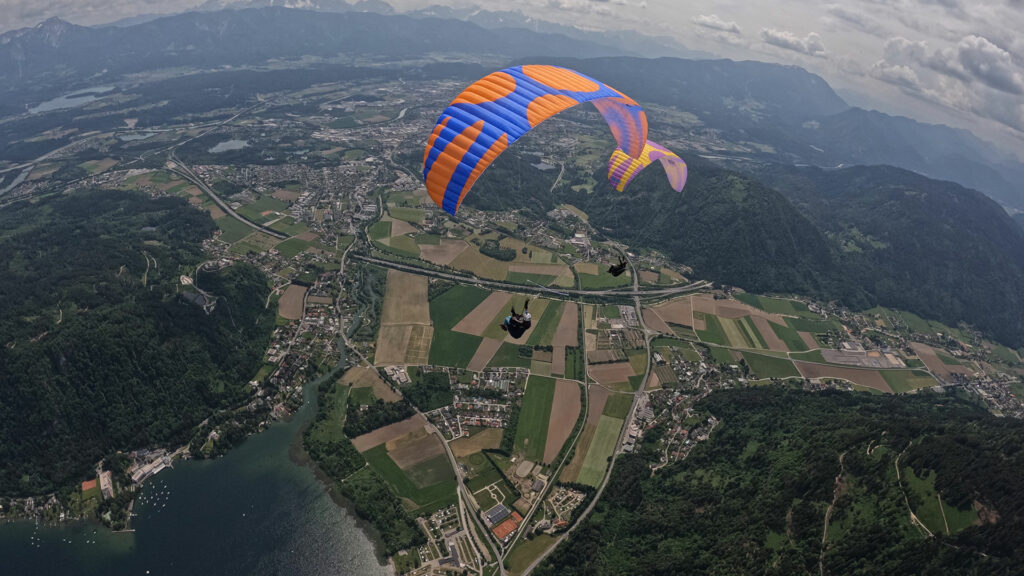
Paragliding safety training
Our safety training is about individual pilot support. Xandi reveals all the important basics that are part of safe paragliding.
The basic requirements for a successful flight are researching and getting to know all kinds of collapses and the safe handling of “extreme flight manoeuvres”. Flying can only be a lot of fun when you know your glider really well. And the winner is known to be whoever has the most fun in the air.
Depending on the pilot level, all current safety training maneuvers and also all acromaneuvers are taught. This offer is unique because the trainer masters every single maneuver perfectly in theory and practice.
Requirements for participation in the course:
Mastering the forward and reverse launch technique in 0-25 km/h wind, adapted to the terrain.
Actually no available courses
Dates for 2023Unfortunately we have to inform you that there are no more free places for 2023. 🙁 Several paragliding clubs from Germany and Austria reserved the contingent in October.
If you want, then write us an e-mail to: sicherheitstraining@xandi.me with the subject: list 24.
In October 2023 you will receive an email with the dates.
Course start and schedule
Since the weather does not stick to our appointments, we have to adapt to the weather. In order to increase the chances of good flying weather, we take seven days.
The course (5 hours of theory) generally starts on Monday at 3 pm. if the weather forecast is good. After that, two flyable days should be possible at least.
The course starts when six flights per participant are possible according to the forecast.
The weather information is published 24 hours before the start of the course (i.e. on Sundays at 3 pm.) on this website.
In the event of bad weather forecasts, the start of the course can be postponed until Thursday.
In the best case, the pilots will have completed six to nine flights from Tuesday to Thursday and can practice what they have learned independently in a safe environment over the following days.
If a course can’t be held due to a long-term period of bad weather, the participant will receive a refund of the deposit. The payment may remain upright until the next season. In this case, the pilot will be informed by mail one week before the new dates are published and will have a free choice of seat.
Day 1
Course start with theory lessons:
3 pm – approx. 7 pm or 8 pm
1. round of introductions
During the round of introductions, the training plans are drawn up.
2. Simulator training
The paragliding simulator was developed to bring theory lessons in paragliding pilot training closer to practice. Away from frontal teaching towards learning with all senses.
Before doing the exercises in the air, the movements can be practiced and internalized.
Katrin and Mario take over the K-examination after the last training unit.
The participants get life jackets and radios, headphones are built into the helmets. A final radio check follows.
Day 2
(in ideal weather)
08:00
Meeting point at the pilot base
weather briefing
Video analysis of day 1 + theory lessons
09:00
Departure to the Kanzelbahn
09:30
Instruction on the terrain by Kathrin
10:00 – 13:00
Each pilot completes two flights
14:00
Briefing / theory lessons / maneuver sequence flight 3
15:00
Departure
17:30
last pilot landed from round 3
Day 3
08:00
Meeting point at the pilot base
weather briefing
Video analyzes from the day before + theory lessons
Each pilot receives the maneuver sequence of his first two flights.
09:00
Departure to the Kanzelbahn
The procedure is the same as the day before.
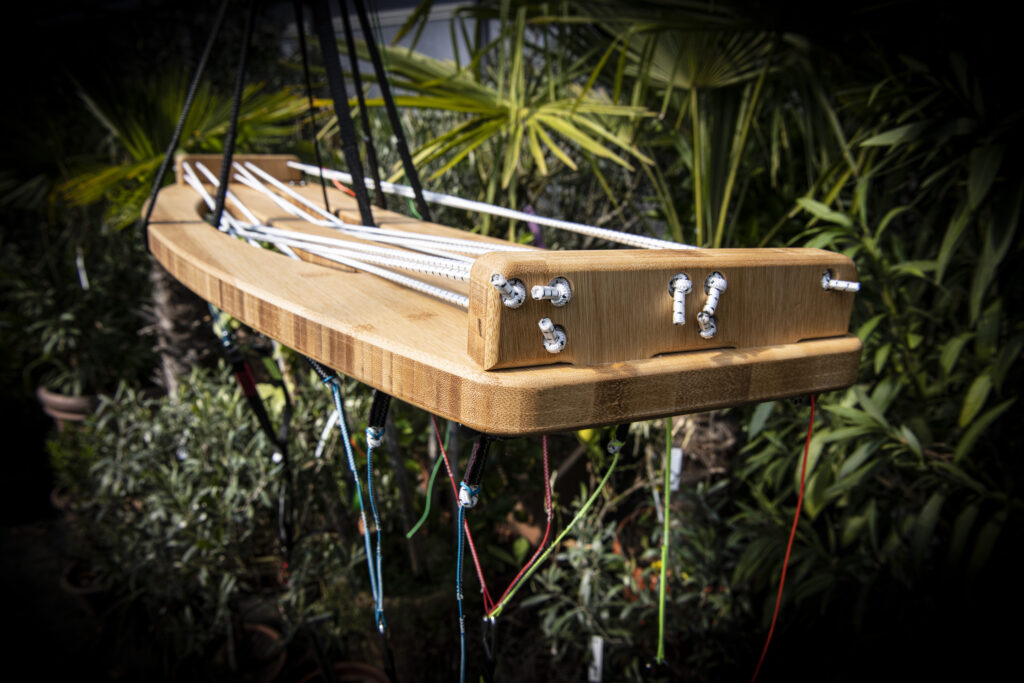
You will learn that and more with us
Basics
- Adjusting the correct seating position
- Getting to know all brake handle positions with quick changes
- Proper use of the accelerator with quick release
- Binder Reach for the rescuer with the right and left hand
- Correct ears
- Find ways to avoid deep stall
- Apply deep stall recovery methods
- Correct steering in clogs
- Application of the three ways to solve the cravat
- Direction control with locked brake
Maneuver
- Correct roll and pitch in simulator
- Proper frontcap pulling (accelerated and decelerated) and applying the deep stall or cravat problem solver
- Correct initiation of the held side caller with correct weight shift
- Proper opening of the folded wing and use of the fix for deep stall or cravats
- Initiation of the rattling spiral with correct, sensitive exit
- Assumption of an incorrect exit with a side collapse / front collapse / cravat
- Correct sequence of movements in the accelerated side collapse
- Correct entry and exit of the spiral dive with the right gaze
- Applying proper B-stall grip technique, solving deep stall and cravat problems
- Correct sequence of movements during a full stall
- Correct sequence of movements when spinning with flyback recovery
- Correct sequence of movements when spinning 360 degrees from trim
- Correct sequence of movements for wingovers, asymmetric spirals and loops
- Recognize the point of initiation from the satellite, with correct exit.
- Identifying the point of initiation of dynamic stall
- Correct posture during rythmik sat with spiral exit
Rescuer release
- Recognizing the autorotation with a targeted rescue throw in the direction of centrifugal force
- Proper retrieval of the main chute
- Using ways to untwist steerable rescues
- Assuming proper posture for tree or ground landing
- Lightning-fast opening of the buckles and release from the harness
- Correct extraction of the inner container
After three days, the pilots have completed between 6 and 9 flights, depending on their physical condition.
In unstable weather conditions with thunderstorms in the afternoon, only two flights per day can often be carried out. In these cases we do the video analysis with theory lessons in the afternoon. The course then starts at 08:45 am on the following day.
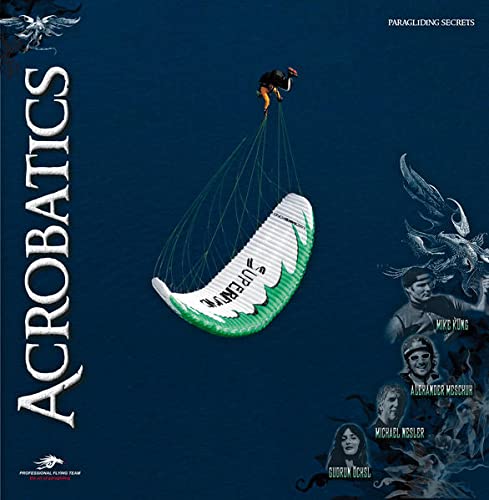
Acrobatics
The first textbook on paragliding acrobatics. From the series “Paragliding Secrets”
ACROBATICS is intended to provide the reader with an exciting, comprehensive introduction to this new, spectacular sport, even those who do not fly themselves.
The book contains all currently known acromanoeuvres with detailed descriptions and sensational photo sequences. And for the first time: tips on training structure, choice of material, competition, sponsoring, physiology & psychology of acro flying. Just as breathtaking as the photos, the design is uniquely sparkling, colorful and funky.
published in 2013
Your trainer team
Xandi, Katrin and MarioXandi Meschuh
OEAEC/DHV flight instructor / Multiple Acro World Cup winner 2003-2016 / Testpilot R&D since 2003 Icaro Paragliders / Book author (Acrobatics – Akrobuch)
Katrin Traumüller
OEAEC/DHV flight instructor / Groundhandling Trainer / Production and sale of paragliding simulators
Mario Oprandi
OEAEC/DHV flight instructor / Namibia paragliding trips for 23 years
